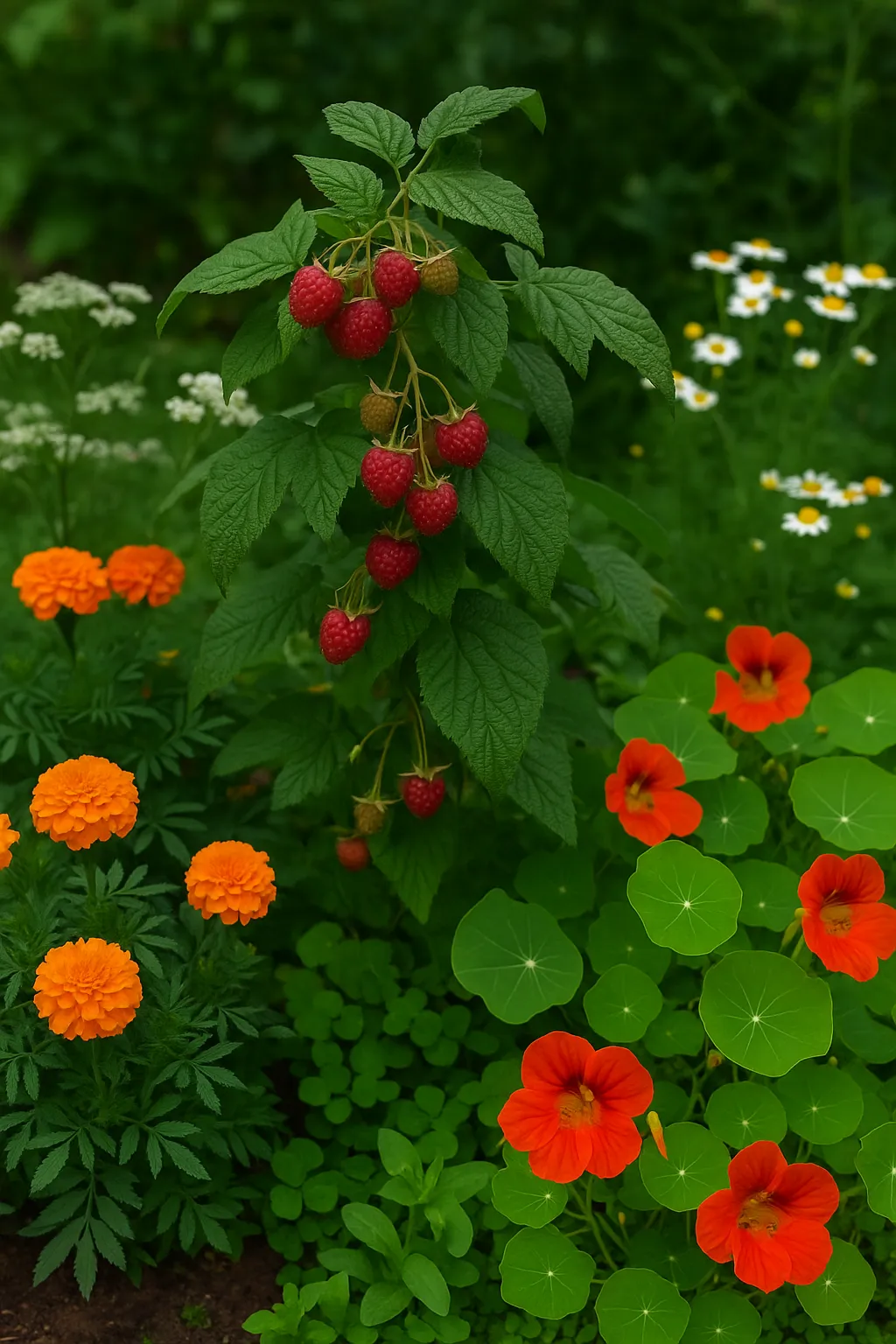Raspberry Companion Planting Guide: Boost Your Harvest Naturally
Learn how to use companion planting to grow healthier, pest-resistant raspberries. Discover the best and worst plants to grow alongside your raspberry bushes.

Raspberries are one of the most rewarding berry crops to grow, offering juicy, flavorful fruits that are perfect for fresh eating, desserts, and preserves. However, growing healthy raspberry plants requires more than just sunlight and watering — it also involves understanding the art of companion planting. By selecting the right plants to grow alongside your raspberries, you can naturally enhance growth, improve soil health, deter pests, and even increase your yield.
What Is Companion Planting?
Companion planting is an age-old gardening technique that involves strategically placing plants together so they can benefit each other. Some plants enrich the soil, others repel harmful insects, and some attract pollinators that improve fruit production. When applied correctly, this method reduces the need for chemical fertilizers and pesticides while creating a more balanced and sustainable garden ecosystem.
Benefits of Companion Planting with Raspberries
- Pest Control: Certain plants can naturally repel pests like aphids, Japanese beetles, and spider mites.
- Pollination Boost: Flowers that attract bees and butterflies enhance raspberry pollination.
- Improved Soil Health: Nitrogen-fixing plants, like legumes, enrich the soil and improve nutrient availability.
- Weed Suppression: Ground-cover companions reduce weed growth and help retain soil moisture.
- Better Growth and Flavor: Some herbs and flowers enhance the flavor of nearby fruits through chemical interactions in the soil.
Best Companion Plants for Raspberries
1. Garlic and Onions
Members of the allium family, such as garlic and onions, are powerful pest deterrents. Their pungent aroma repels aphids, spider mites, and other insects that can harm raspberry leaves and fruit. Additionally, they take up little space and can fit neatly between raspberry rows.
2. Chamomile
Chamomile is not only a soothing tea herb but also a plant that enhances the flavor and vitality of raspberries. It attracts beneficial insects like hoverflies and ladybugs while improving soil quality through natural antibacterial compounds.
3. Tansy
Tansy acts as a strong pest deterrent, especially against ants and beetles. Its yellow blooms attract pollinators, creating a balanced ecosystem around raspberry bushes. However, be cautious, as tansy can spread rapidly; consider planting it in containers nearby.
4. Clover
Clover is one of the best ground covers for raspberries. As a legume, it fixes nitrogen in the soil, improving fertility. Its dense foliage helps prevent weed growth and keeps the soil cool and moist — perfect conditions for raspberries.
5. Marigolds
Marigolds are vibrant, low-maintenance flowers that repel nematodes and other harmful soil pests. They also attract beneficial pollinators. Plant marigolds along the edges of your raspberry patch for both aesthetic and functional benefits.
6. Nasturtiums
Nasturtiums act as a natural trap crop — they lure aphids and other pests away from your raspberries. Their colorful blossoms are edible and make a great addition to salads. Plant them slightly away from the raspberry rows for maximum effectiveness.
7. Rue and Yarrow
Rue deters Japanese beetles, while yarrow improves soil quality and attracts predatory insects that keep pests in check. Together, they form a powerful team for maintaining healthy raspberry plants.
What Not to Plant Near Raspberries
While many plants benefit raspberries, some can cause harm or compete for nutrients. Avoid planting these near your raspberry patch:
- Nightshades: Tomatoes, potatoes, and eggplants can spread fungal diseases like verticillium wilt.
- Strawberries: Though related, strawberries can attract similar pests and diseases, creating competition and health issues.
- Fennel: Fennel secretes compounds that inhibit the growth of nearby plants, including raspberries.
- Blackberries: These cousins can cross-contaminate with diseases such as cane blight and rust.
Designing a Raspberry Companion Garden
To create a thriving raspberry garden, plan your layout strategically:
- Place nitrogen-fixers like clover or beans between rows for soil enrichment.
- Surround raspberry beds with onions, garlic, or marigolds to deter pests.
- Plant pollinator-attracting flowers such as chamomile and yarrow nearby.
- Maintain space for air circulation — raspberries are prone to fungal issues in humid conditions.
Tips for Successful Companion Planting
- Rotate Crops: Change plant positions each year to prevent soil depletion and disease buildup.
- Mulch Generously: Use straw or wood chips to maintain soil moisture and suppress weeds.
- Monitor Pest Activity: Even with companions, regular checks are essential to catch infestations early.
- Encourage Pollinators: Avoid using harsh pesticides that can harm bees and beneficial insects.
- Prune Regularly: Remove dead canes to improve airflow and prevent disease.
Seasonal Considerations
Raspberries thrive in full sun and well-drained soil. For best results, plant companions in early spring alongside your raspberry canes. In autumn, add mulch or compost to prepare for the next growing season. Herbs like chamomile and yarrow can overwinter and return in spring, maintaining year-round garden benefits.
Conclusion
Companion planting with raspberries is a natural and effective way to promote healthy growth, control pests, and boost productivity. By surrounding your raspberry patch with helpful plants such as garlic, clover, and chamomile, you create a thriving mini-ecosystem that sustains itself season after season. With thoughtful planning, your raspberry garden can flourish beautifully — producing abundant, flavorful berries while reducing your reliance on chemicals and synthetic fertilizers.
Remember: a diverse garden is a resilient garden. Each plant plays a role in maintaining balance, protecting others, and creating a harmonious environment where your raspberries can truly thrive.


